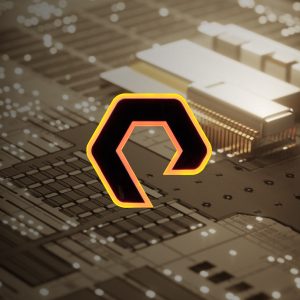Machine learning (ML) is a subset of artificial intelligence (AI) that enables systems to learn from data without being explicitly programmed. Instead of relying on rules-based programming, ML algorithms detect patterns in data and make data-driven predictions or decisions. ML is increasingly crucial across various industries due to its ability to analyze large data sets, identify patterns, and make predictions or decisions with increasing accuracy.
Machine learning pipelines have become an important part of MLOps. By following a well-defined machine learning pipeline, organizations can reduce time to market and ensure the reliability and scalability of their AI solutions.
This article explores what ML pipelines are, their key components, how to build an ML pipeline, and ML pipeline challenges and best practices.
What Is an ML Pipeline?
An ML pipeline is a sequence of interconnected steps that transform raw data into trained and deployable ML models. Each step in the pipeline performs a specific task, such as data preprocessing, feature engineering, model training, evaluation, deployment, and maintenance. The output of one step serves as the input to the next, creating a streamlined workflow for developing and deploying machine learning models.
The purpose of a machine learning pipeline is to automate and standardize the ML workflow for the sake of improving efficiency, reproducibility, and scalability.
Components of a Machine Learning Pipeline
The key components of a machine learning pipeline encompass various stages, each playing a critical role in transforming raw data into a trained and deployable machine learning model.
These components are:
1. Data ingestion
Data ingestion involves gathering raw data from diverse sources such as databases, files, APIs, or streaming platforms. High-quality, relevant data is fundamental for training accurate ML models. Data ingestion ensures that the pipeline has access to the necessary data for analysis and model development.
2. Data preprocessing
Data preprocessing encompasses tasks such as cleaning, transforming, and normalizing the raw data to make it suitable for analysis and modeling. Preprocessing helps address issues such as missing values, outliers, and inconsistencies in the data, which could adversely affect model performance if left unhandled. It ensures that the data is in a consistent and usable format for subsequent stages.
3. Feature engineering
Feature engineering involves selecting, extracting, or creating relevant features from the preprocessed data that are informative for training the ML model. Well-engineered features capture important patterns and relationships in the data, leading to more accurate and robust models. Feature engineering is crucial for maximizing the model's predictive power and generalization ability.
4. Model training
Model training entails selecting an appropriate ML algorithm, fitting it to the prepared data set, and optimizing its parameters to minimize prediction errors. Training the model on labeled data enables it to learn patterns and relationships, allowing it to make predictions or decisions on unseen data. The choice of algorithm and training process significantly influences the model's performance and suitability for the task at hand.
5. Model evaluation
Model evaluation assesses the trained model's performance using metrics such as accuracy, precision, recall, F1 score, or area under the curve (AUC). This evaluation helps gauge how well the model generalizes to unseen data and identifies any potential issues such as overfitting or underfitting. It provides insights into the model's strengths and weaknesses, guiding further iterations and improvements.
Each of these components plays a crucial role in the machine learning pipeline, collectively contributing to the development of accurate and reliable ML models. By systematically addressing data-related challenges, optimizing feature representation, and selecting appropriate algorithms, the pipeline enables organizations to extract valuable insights and make informed decisions from their data.
How to Build a Machine Learning Pipeline
Building a machine learning pipeline involves several steps:
1. Collect the data
First, you need to identify relevant data sources based on the problem domain and objectives, then gather data from databases, APIs, files, or other sources. Finally, you should ensure data quality by checking for completeness, consistency, and accuracy.
2. Clean the data
The first step in cleaning your data is to impute missing values using techniques such as mean, median, or mode imputation, or deleting rows or columns with missing values if appropriate. Next, detect and handle outliers using methods such as trimming, winsorization, or outlier replacement, and standardize numerical features to have a mean of 0 and a standard deviation of 1, or scale them to a specific range. Then, convert categorical variables into numerical representations using techniques such as one-hot encoding or label encoding and apply transformations such as log transformation, Box-Cox transformation, or feature scaling to improve data distribution and model performance.
3. Engineer the features
First, you should identify features that are likely to be informative for predicting the target variable based on domain knowledge or feature importance analysis. Then, generate new features by combining existing features, performing mathematical operations, or extracting information from text or other unstructured data. And finally, scale numerical features to a common scale to prevent certain features from dominating the model training process.
4. Select and train the model
Select machine learning algorithms (e.g., linear regression, decision trees, random forests, support vector machines) based on the nature of the problem (classification, regression, clustering), then divide the data set into training and validation sets (e.g., using stratified sampling for classification tasks) to evaluate model performance. Finally, fit the selected algorithms to the training data using appropriate training techniques (e.g., gradient descent for neural networks, tree-based algorithms for decision trees).
5. Tune hyperparameters
Identify the hyperparameters of the chosen algorithms that control the model's behavior (e.g., learning rate, regularization strength, tree depth). Use techniques such as grid search, random search, or Bayesian optimization to find the optimal hyperparameter values that maximize model performance on the validation set. Then, fine-tune the model hyperparameters iteratively based on validation performance until you get satisfactory results.
6. Evaluate the models
Assess the trained models' performance on the validation set using appropriate evaluation metrics (e.g., accuracy, precision, recall, F1-score, ROC-AUC), then compare the performance of different models to select the best-performing one for deployment.







